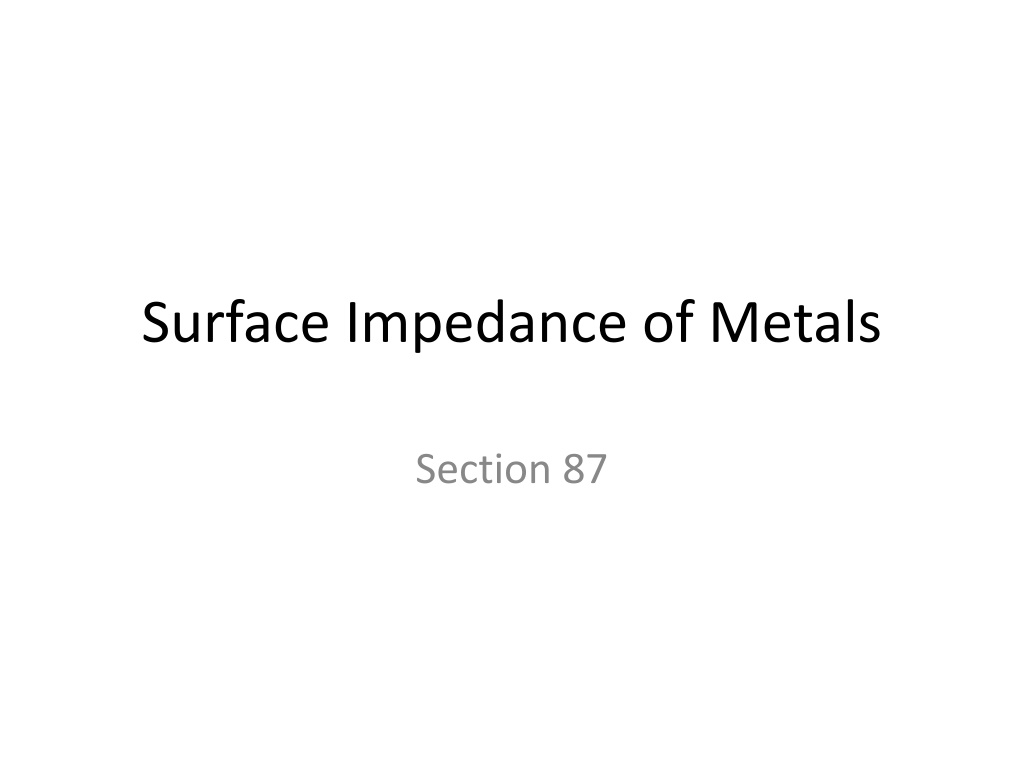
Understanding Surface Impedance of Metals and Electromagnetic Wave Behavior
Explore the concept of surface impedance of metals, time-averaged energy flux, and electromagnetic wave penetration depth in this informative content. Learn about the relationship between axial vector H and polar vector E, and the implications of increasing frequencies on field uniformity.
Download Presentation

Please find below an Image/Link to download the presentation.
The content on the website is provided AS IS for your information and personal use only. It may not be sold, licensed, or shared on other websites without obtaining consent from the author. Download presentation by click this link. If you encounter any issues during the download, it is possible that the publisher has removed the file from their server.
E N D
Presentation Transcript
Surface Impedance of Metals Section 87
E = -(c/) k x H where k = ( ) /c
Since Etand Htare continuous at the surface, they are related by the same expression just outside
Surface impedance At low
As frequency increases, penetration depth eventually becomes comparable to the electron mean free path. The field is then too non-uniform to use the macroscopic description based on . Fields don t satisfy the macroscopic Maxwell equations in the metal
This is the only possible linear relation between the axial vector H and the polar vector E.
Distance traveled by conduction electrons during one electromagnetic wave period Then we can neglect the spatial inhomogeneity of the field relative to the electron motion
